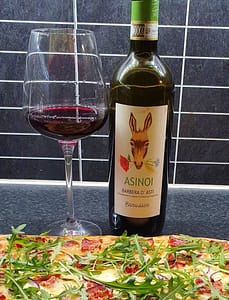Clemens Busch and his wife Rita makes exciting wines mainly from the Pündericher Marienburg vineyard in Mosel. Everything is organic, and natural practices in the vineyards and cellar give a feeling of expressiveness between tradition and forward-thinking.
In the Marienburg vineyard, with vines placed on soils based on gray slate.This dry riesling is made with old style artisanal methods, including biodynamic practises. Alcoholic fermentation started with indigenous yeasts. The pressing was light, the maceration went on with stalks for 48 hours, before ageing15 months in large oak barrels in contact with the lees. It was bottled without any filtration and clocks in at 11,5% alc.
(alter) native riesling 2016 (Clemens Busch)
Golden, slightly turbid. Aroma of white flowers, yeast, lime peel, and a touch of honey. A bit fizzy, with rounded acidity and a dry finish. Refreshing and very quaffable.
Price: Medium
Food: A great variety, like fish (both white, red, smoked too), hams, pasta, cheese (hard, aged), and also quite unusual stuff like omelettes and pies
Leave a Comment











